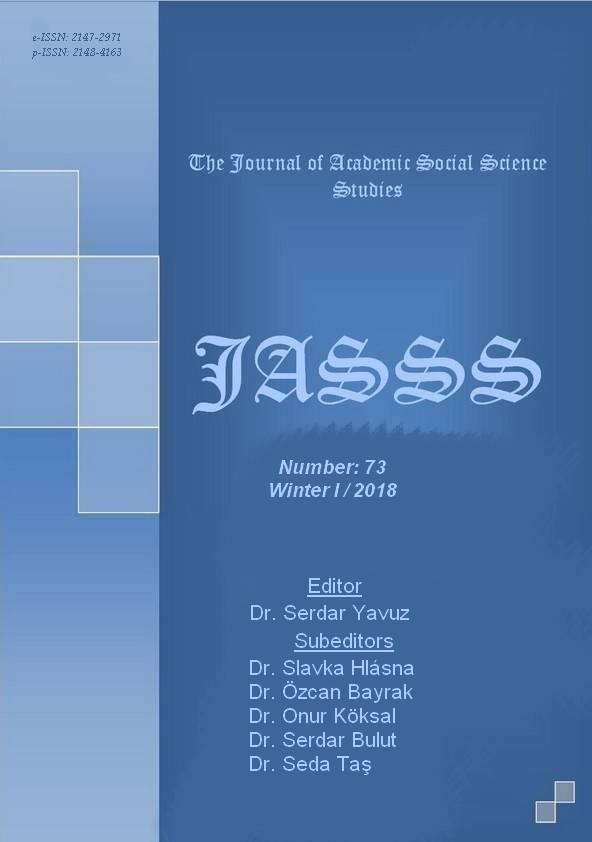Author :
Abstract
Sonat-rondo, çoğunlukla sonatların, konçertoların, senfonilerin ve benzeri eserlerin final bölümlerinde yer bulan ve yaygınlıkla ABA C ABA biçiminde formüle edilen bir form türüdür. Burada, ikinci episod olan C kimi eserlerde yeni bir tematik malzemeye sahipken, kimi eserlerde ise bir Gelişme bölümü olarak karşımıza çıkabilmektedir. Bu episodun ardından gelen ABA tekrarının kısaltıldığı, hatta A bölmelerinin ihmal edildiği durumlarla karşılaşılması da olasıdır. “İlk sonat-rondonun mucidinin kim olduğu”, bugün dahi net biçimde yanıtlanamamış bir sorudur. Yapılan literatür taraması sonucunda şu 4 eserin ismine ulaşılmaktadır: 1) Joseph Haydn. Yaylı Kuartet, Hob.III:3, Re Majör, V. Bölüm (1764)? 2) Wofgang Amadeus Mozart. Yaylı Kuartet, Nr. 4, KV 157, Do Majör, III. Bölüm (1773) 3) Joseph Haydn. Senfoni, Hob.I:64, La Majör, IV. Bölüm (1775) 4) Joseph Haydn. Senfoni, Hob.I:77, Si bemol Majör, IV. Bölüm (1782) “Anılan bu eserlerden herhangi biri, bugünkü normlarda bir sonat-rondo mudur?” Bu sorunun yanıtını bulmak üzere bir dizi çalışma başlatılmıştır. Bu çerçevede, 2017’de Marmaris’te gerçekleştirilen 3. Uluslararası Müzik ve Dans Kongresi’nde Haydn’ın 64. ve 77. senfonilerinin ilgili bölümleri ele alınmış ve her iki eserin de sonat-rondo formunda olmadığı nedenleriyle birlikte ortaya koyulmuştur. Bu çalışmada ise Mozart ve Haydn’ın yukarıda anılan yaylı kuartetlerinin ilgili bölümlerinin form yapıları incelenecek ve hangisinin ilk sonat-rondo örneği olarak kabul edilebileceği ortaya koyulacaktır.
Keywords
Abstract
Sonata-rondo is a type of musical form which could be formulated as ABA C ABA and most commonly existing on the last movements of sonatas, concertos, symphonies or similar genres. The second episode C might be in a new thematic character in some pieces, as well as it might be a development section in some others. The ABA revival following this episode could be abbreviated or even sometimes A, the rondo themes, could be omitted. There are several differing references on the inventer of sonata-rondo. Basing on the literature survey, four pieces come to the fore: 1) Joseph Haydn. String Quartet, Hob.III:3, D Major, V. Movement (1764)? 2) Wofgang Amadeus Mozart. String Quartet, Nr. 4, KV 157, C Major, III. Movement (1773) 3) Joseph Haydn. Symphony, Hob.I:64, A Major, IV. Movement (1775) 4) Joseph Haydn. Symphony, Hob.I:77, Bb Major, IV. Movement (1782) Considering the sonata-rondo norms accepted today, is it any possible to call any of these four pieces as sonata-rondo form? In order to find an answer to this question, a series of works have been started. In this frame, at the 3rd International Music and Dance Congress held in Marmaris in 2017, the related movements of Haydn’s 64th and 77th symphonies were examined and it was demonstrated that none of these two works are in sonata-rondo form. In this study, form analysis of Mozart’s and Haydn’s string quartet movements mentioned above will be carried out and an answer for the possible inventer of sonata-rondo form is going to be found.





